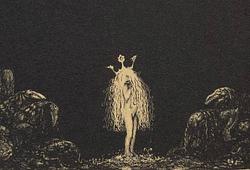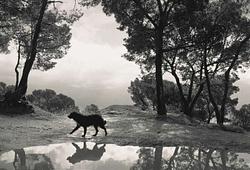Lai Fong
"The Sino-Japanese Hostilities, Shanghai, 1937"
Album with 100 gelatin silver prints mounted in pairs or threes on black paper leaves, sheet 6 x 8 cm per print. Cloth covered cardboard cover, black silk tie, silvery embossed illustration and title on the front cover. Album 15.3 x 23.5 cm.
Provenance
By inheritance to the current owner.
More information
The Ah Fong studio was established in Hong Kong in 1859 by Lai Afong, a commercial photographer who was trained by early western photographers in China. "The most significant Chinese photographer of the nineteenth century" (Terry Bennett in Hannay, Encyclopedia of Nineteenth Century Photography (p.815) Afong subsequently opened studios in Canton, Shanghai, and Wei-Hai-Wei. It seems that the studio maintained its reputation when his son took over around the turn of the century.
Ah Fong Photography Studio, recording the brutal siege and conquest of Shanghai by the Japanese at the opening of the Second Sino-Japanese War. Japan's failure to defeat China in this war became the key dynamic for what happened in Asia during the Second World War. In his award-winning study of the conflict - China's War with Japan, 1937-1945: The Struggle for Survival (2013) - Rana Mitter, Professor of the History and Politics of Modern China at the Institute for Chinese Studies at Oxford, refers to the Battle of Shanghai as turning "China's most open, lively and cosmopolitan centre... into a charnel house".
Following the First Sino-Japanese War (1894-5) in which Japan had conquered and absorbed Manchuria into their empire, hostilities had sporadically flared and intensified in the region. After a number of provocations in the summer of 1937 Chiang Kai-shek's nationalist forces joined with the warlords of Hunan and Szechwan provinces to fight the Japanese. Chiang believed that attacks on Japanese naval installations and troops in and around Shanghai would force the hand of foreign powers to ally with China in the fight against Japan to protect their investments in southern China. The Nationalist Chinese managed to hold out for three months against ferocious bombardment by the Japanese from 'planes based in Taiwan, and ships on the Huangpu River. These attacks inflicted terrible casualties on the Chinese, eventually forcing them to retreat from Shanghai to Nanking under constant attack from Japanese reinforcements.









































































































































































